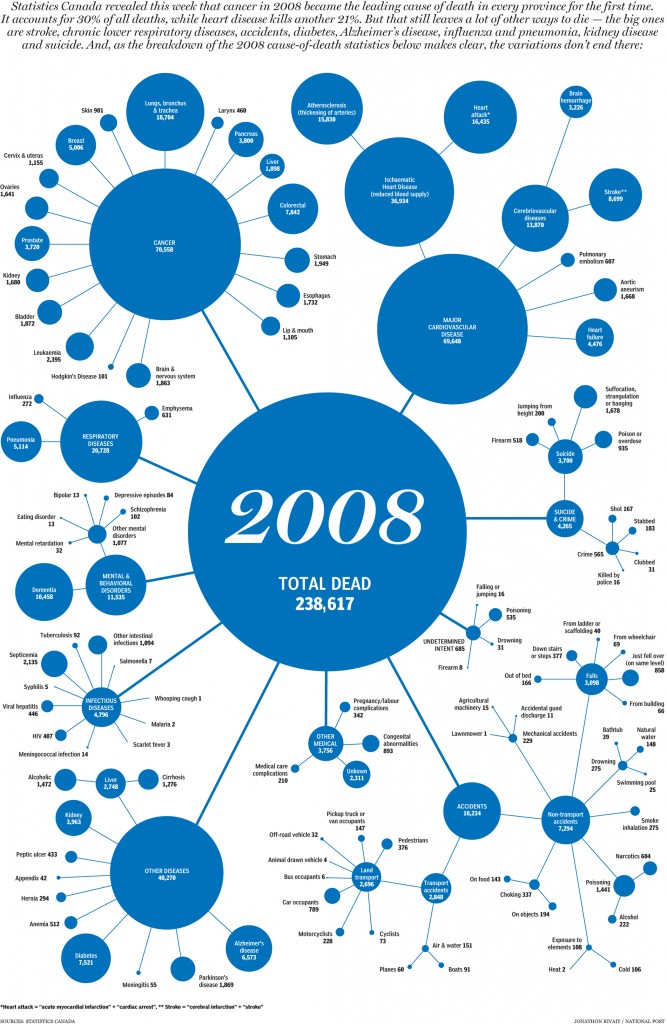The Silver Lining of More Cancer Deaths
A National Post graphic does a good job showing causes of death across Canada by percentage, and notes that, for the first time, cancer is the leading cause in every province, responsible for about 30 percent of all deaths. That is a heartbreaking number, not least because cancer is a disease (or set of diseases, really) about which so much is still unknown.
As we wrote in a section of SuperFreakonomics called “We’re still getting our butts kicked by cancer,” seeing cancer statistics like this might naturally lead one to conclude that the “war on cancer” has been a dismal failure. That, however, would be an overstatement. While it’s true that we are, as one oncologist told us, “still getting our butts kicked,” there is somewhat of a silver lining in the cancer death rate. From SuperFreak:
The age-adjusted mortality rate for cancer is essentially unchanged over the past half-century, at about 200 deaths per 100,000 people. This is despite President Nixon’s declaration of a “war on cancer” more than thirty years ago, which led to a dramatic increase in funding and public awareness.
Believe it or not, this flat mortality rate actually hides some good news. Over the same period, age-adjusted mortality from cardiovascular disease has plummeted, from nearly 600 people per 100,000 to well beneath 300.* What does this mean?
Many people who in previous generations would have died from heart disease are now living long enough to die from cancer instead.
Indeed, nearly 90 percent of newly diagnosed lung-cancer victims are fifty-five or older; the median age is seventy-one. The flat cancer death rate obscures another hopeful trend. For people twenty and younger, mortality has fallen by more than 50 percent, while people aged twenty to forty have seen a decline of 20 percent. These gains are real and heartening — all the more so because the incidence of cancer among those age groups has been increasing. (The reasons for this increase aren’t yet clear, but among the suspects are diet, behaviors, and environmental factors.)
(HT: Renzo Isabella)
*See Bo E. Honore and Adriana Lleras-Muney, “Bounds in Competing Risks Models and the War on Cancer,” Econometrica 76, no. 6 (November 2006).


Comments